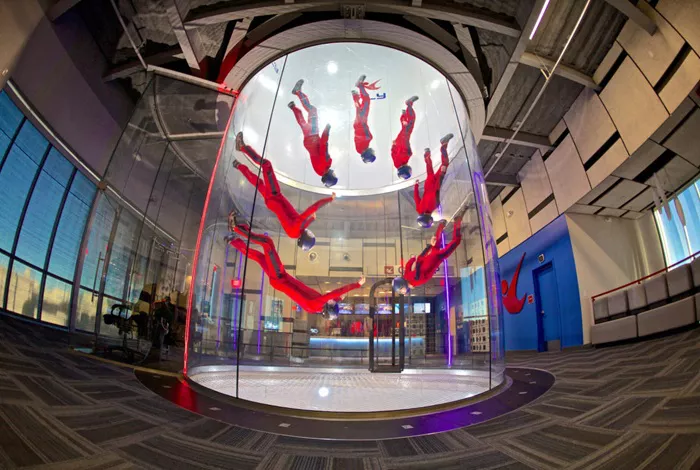Skydiving is an exhilarating sport that combines the thrill of freefall with breathtaking views. One of the most critical aspects of skydiving is the body position a skydiver adopts during freefall. The arch position, often referred to as “belly flying,” is essential for stability and control while descending through the sky. This article explores why skydivers open their arms and legs, emphasizing the mechanics, benefits, and techniques involved in this fundamental position.
The Basics of Skydiving Body Positions
When a skydiver exits the aircraft, they enter a state of freefall. The body experiences gravitational forces and aerodynamic forces simultaneously. To navigate these forces effectively, skydivers must adopt specific body positions. The arch position is the most widely used and recognized among these positions.
What Is the Arch Position?
The arch position involves bending backward so that the body forms a curved shape, resembling a banana. In this position, the hips are thrust forward while the head and feet are extended backward. This creates a stable center of gravity that allows for controlled descent. The arms and legs are spread wide, which helps to create drag and maintain stability during freefall.
Why Do Skydivers Open Their Arms and Legs?
Skydivers open their arms and legs for several reasons:
Stability: By spreading their limbs, skydivers increase their surface area, which helps to create drag. This drag counters the forward motion caused by gravity, allowing for a more stable descent. A stable position is crucial because it prevents tumbling or spinning during freefall.
Control: The arch position allows skydivers to control their orientation in the air. By adjusting their limbs, they can shift their center of gravity and steer themselves in different directions. For instance, extending one arm or leg can initiate a turn or change in orientation.
Safety: A stable arch position makes it easier to deploy the parachute safely. When it’s time to open the parachute, being in an arched position ensures that the skydiver is facing downward, which is optimal for parachute deployment.
Aerodynamics: The body’s shape in an arched position reduces air resistance compared to other positions like standing or sitting. This aerodynamic advantage allows skydivers to fall at a controlled speed while maintaining stability.
Mechanics of the Arch Position
Understanding how to achieve and maintain the arch position is vital for all skydivers.
Body Alignment
To form an effective arch:
Hips Forward: Skydivers should push their hips forward while keeping their back arched. This alignment ensures that the belly is the lowest point of the body, creating a balanced center of gravity.
Head Up: Keeping the chin up allows for better visibility and helps maintain an open airway for breathing during freefall.
Limbs Extended: Arms should be spread wide at about shoulder height with palms facing down. Legs should be extended but not rigid; they can be slightly bent at the knees to enhance stability.
Practice Techniques
New skydivers often practice achieving this position on land before jumping:
Ground Drills: Lying on their stomachs on a flat surface, beginners can practice lifting their limbs while keeping their hips grounded to simulate the arch position.
Wind Tunnels: Indoor skydiving facilities offer wind tunnel experiences where individuals can practice maintaining an arch in a controlled environment before jumping from an aircraft.
Benefits of Mastering the Arch Position
Mastering the arch position provides numerous benefits that enhance both safety and enjoyment during jumps.
Enhanced Stability: A well-executed arch minimizes erratic movements during freefall, making it easier for instructors to guide tandem jumpers or for solo jumpers to control their descent.
Increased Awareness: Practicing body awareness in this position helps skydivers develop better control over their movements in various flying styles later on, such as tracking or freeflying.
Improved Performance: Experienced skydivers who master the arch can transition into more advanced maneuvers with greater ease, allowing them to explore different disciplines within skydiving.
Common Mistakes in Achieving the Arch Position
While learning to skydive, beginners may struggle with maintaining an effective arch due to common mistakes:
Bending at the Waist: Instead of pushing hips forward, some may bend at the waist, leading to instability.
Tensing Limbs: Keeping limbs too rigid can reduce drag efficiency; relaxed limbs create better airflow around the body.
Looking Down: Focusing too much on what’s below can lead to improper head positioning; looking forward helps maintain alignment.
Conclusion
The arch position is fundamental in skydiving due to its role in stability, control, and safety during freefall. By opening their arms and legs, skydivers create drag that enhances stability and allows for better maneuverability through the air. Understanding and mastering this essential technique not only improves performance but also contributes significantly to safety during jumps.
As you prepare for your first skydive or continue your journey as an experienced jumper, remember that perfecting your arch will lay a solid foundation for all future aerial adventures. Embrace this thrilling sport with confidence knowing that your body position plays a crucial role in ensuring a safe and enjoyable experience high above the ground.
Related topics:
- How Does Tandem Skydiving Work
- How Long Does The Average Skydive Last?
- The 6 Best Skydiving Melbourne in 2024

